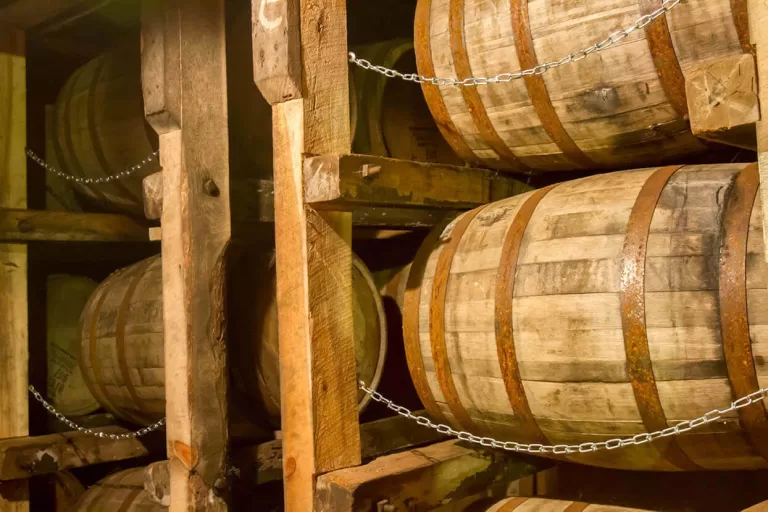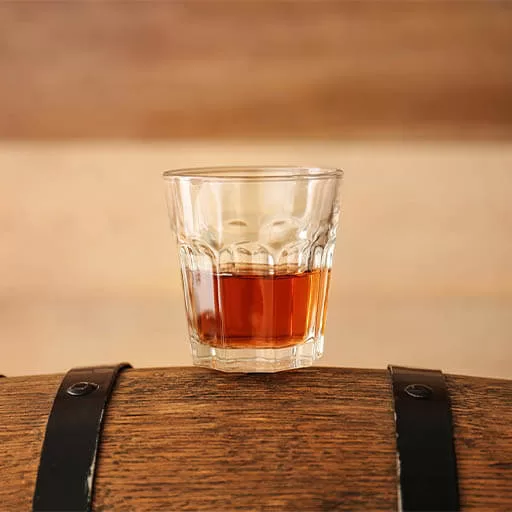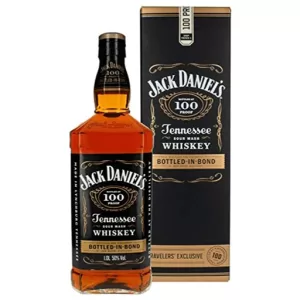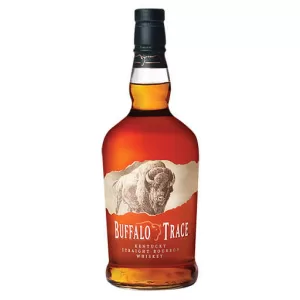Uncovering the Mysterious "Angels Share" in the World of Bourbon
Bourbon is a beloved American spirit that has been enjoyed for centuries. It is a whiskey that is made primarily from corn and aged in oak barrels, which imparts a rich and complex flavor profile. As it ages, however, a portion of the liquid is lost to evaporation, a phenomenon known as the “Angels’ Share.”
“Angels’ Share” is a term used in the world of bourbon to refer to the portion of whiskey that is lost to evaporation during the aging process. This evaporation takes place as the whiskey is aged in oak barrels, and it is estimated that around 2-4% of the liquid is lost each year.
In this blog, we will explore what the “Angels’ Share” means for the production of bourbon, how it affects the final product, and why it is seen as a natural and even romantic element of the craft of bourbon-making.
The term “Angels’ Share” has a poetic and somewhat mystical quality to it, and it is said to have originated in Scotland, where it was used to describe the loss of alcohol during the maturation of Scotch whisky. It is believed that the term comes from the idea that the lost alcohol is being enjoyed by the angels, as it is said to add to the richness and complexity of the aroma of the aging whiskey.
The “Angels’ Share” is a crucial factor in the production of bourbon, as it affects both the quantity and quality of the final product. When whiskey is aged in barrels, it gradually loses alcohol and water through evaporation, leaving behind a more concentrated and flavorful spirit.
This process takes place over several years, and it is estimated that around 2-4% of the liquid is lost each year, depending on the temperature, humidity, and other environmental factors. As a result, the longer a bourbon is aged, the higher the percentage of the “Angels’ Share”, and the more complex and nuanced its flavor profile becomes.
As the bourbon matures, evaporation will continue to occur, albeit at a much slower rate. This process is ongoing and will persist until the end of the maturation period. A 20-year-old spirit, for example, may lose up to 40% of its original volume due to this evaporation.

While the “Angels’ Share” is a natural part of the bourbon aging process, it also presents a significant challenge for distilleries. The lost liquid means that the amount of whiskey produced from each barrel is reduced, which in turn affects the price of the final product.
To minimize the impact of the “Angels’ Share”, distilleries take great care to ensure that their barrels are stored in optimal conditions, with consistent temperature and humidity levels.
Some distilleries even rotate their barrels periodically, or store them on higher floors where the temperature is warmer, to encourage evaporation and concentrate the flavor of the bourbon. Despite these efforts, however, the “Angels’ Share” remains an inevitable and unpredictable part of the craft of bourbon-making.
The “Angels’ Share” is more than just a technical term in the world of bourbon. It is also a romantic and mystical concept that has captured the imagination of whiskey lovers for generations. The idea that the lost alcohol is being enjoyed by the angels adds to the mythology and folklore surrounding the bourbon-making process.
The term has even inspired the names of numerous bourbon brands, such as Angel’s Envy and Angel’s Share, which pay homage to the tradition and craft of bourbon-making. For many whiskey enthusiasts, the “Angels’ Share” represents the beauty and complexity of this beloved spirit, and it is seen as a testament to the skill and artistry of the distillers who create it.
One interesting aspect of the “Angels’ Share” is its cultural significance. While the term is most commonly associated with bourbon, it is also used in other contexts, such as wine-making and Scotch whisky. In Scotland, for instance, the term “angel’s share” is used to describe the amount of whisky that is lost to evaporation during the aging process, which can be as much as 2% per year.
Similarly, in the world of wine-making, the term is used to describe the amount of wine that is lost to evaporation during the aging process, which is also known as the “devil’s cut.” In all these contexts, the concept of evaporation and loss has taken on symbolic meaning, reflecting the transience and impermanence of life itself.
Despite its ethereal connotations, the “Angels’ Share” also has a practical impact on the bourbon industry. As the demand for bourbon has increased in recent years, many distilleries have struggled to keep up with production. The “Angels’ Share”, however, limits the amount of bourbon that can be produced from each barrel, which has created a scarcity that has driven up the price of the final product.
Some distilleries have attempted to address this issue by experimenting with different aging techniques or using smaller barrels, which can accelerate the aging process and reduce the amount of liquid lost to evaporation. Nevertheless, the Angels’ Share remains a challenge for distilleries, and it is likely to continue shaping the flavor, quality, and cost of bourbon for years to come.
In recent years, the “Angels’ Share” has also taken on a new meaning in the world of bourbon, as some distilleries have found innovative ways to repurpose the lost liquid. For example, some craft distilleries have begun to make vinegar or other spirits from the evaporated alcohol, while others have experimented with using it as fuel for their stills.
In this way, the “Angels’ Share” has become a resource rather than a waste product, demonstrating the ingenuity and resourcefulness of the bourbon industry. While these efforts are still in their early stages, they highlight the potential for the “Angels’ Share” to become a more sustainable and eco-friendly aspect of the bourbon-making process.
Jack Daniel’s Distillery even has their own Angel’s Share Distillery Tour. You can learn more about that from their website at: Angel’s Share Distillery Tour.
Whether it is being enjoyed by the angels or repurposed for other uses, the “Angels’ Share” remains a fascinating and essential part of the world of bourbon, and it is sure to inspire new generations of distillers and enthusiasts for years to come.
Overall, the “Angels’ Share” is a significant and multi-faceted aspect of the world of bourbon. It speaks to the romance and mythology of whiskey-making, as well as the practical challenges and economic implications of producing this beloved spirit. At the same time, the concept of the “Angels’ Share” has evolved over time, taking on new meanings and applications in different contexts.
Whether it is being lost to evaporation, repurposed for other uses, or enjoyed by celestial beings, the “Angels’ Share” remains an essential part of the bourbon-making process, and it adds to the richness and complexity of this beloved spirit. Whether you are a seasoned connoisseur or a newcomer to the world of whiskey, the “Angels’ Share” is sure to inspire your imagination and deepen your appreciation of this timeless craft.
Finally, the “Angels’ Share” reminds us of the importance of patience, craftsmanship, and tradition in the production of bourbon. While the aging process may be slow and unpredictable, it is ultimately what gives bourbon its unique character and depth. From the oak barrels to the evaporation process, every step of the production process plays a critical role in shaping the final product.
By honoring the “Angels’ Share”, we pay tribute to the generations of distillers who have dedicated their lives to perfecting the art of bourbon-making. At the same time, we celebrate the ongoing evolution of this craft, as new distillers and new techniques emerge to push the boundaries of what is possible.
Whether you are a connoisseur of fine bourbon or simply appreciate the beauty of this beloved spirit, the “Angels’ Share” is an important and fascinating aspect of the craft of whiskey-making.
For more from The Bourbon Wall, check out our posts on our Blog Page.




